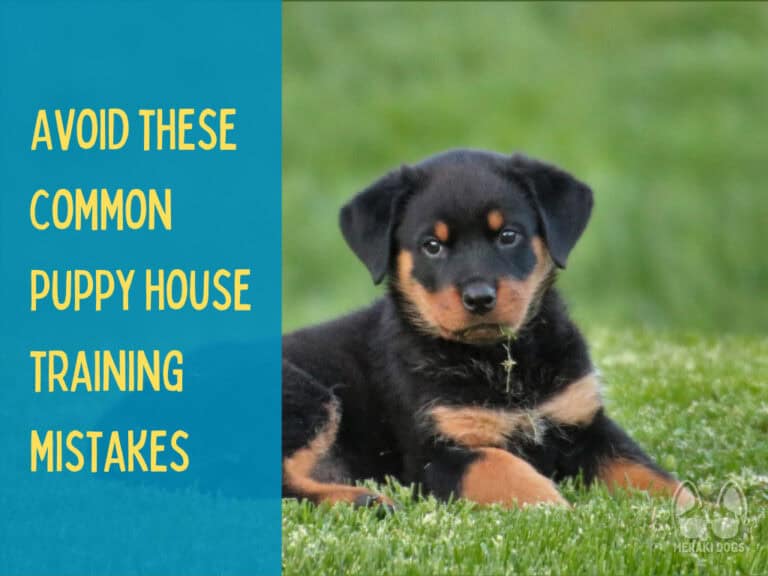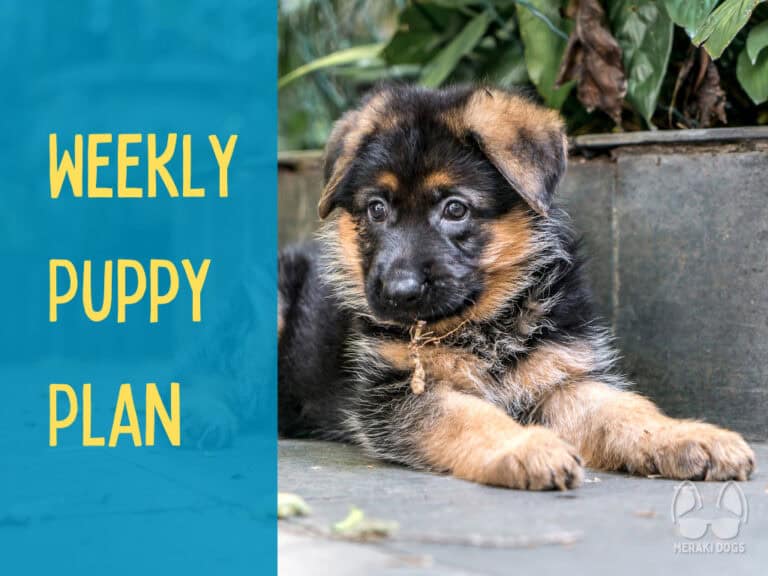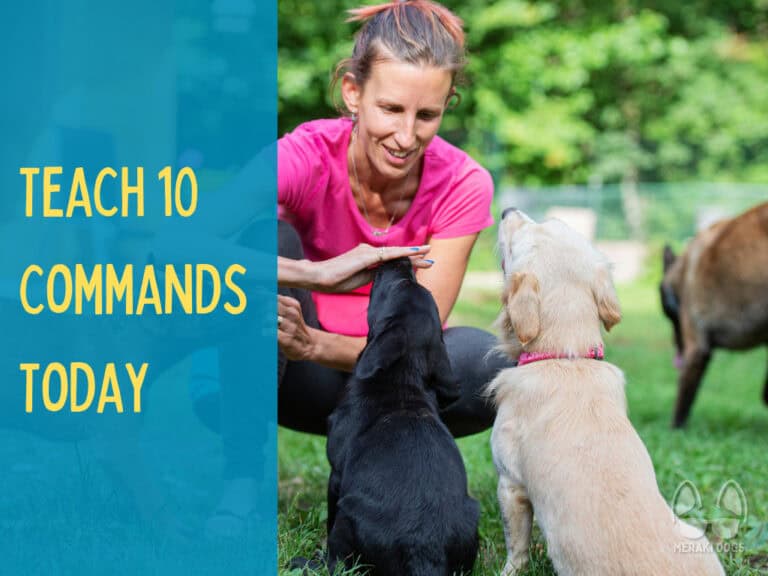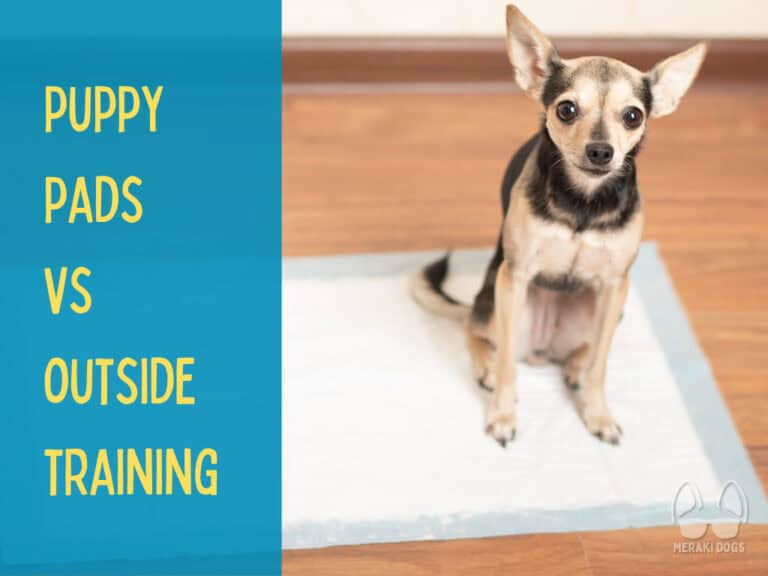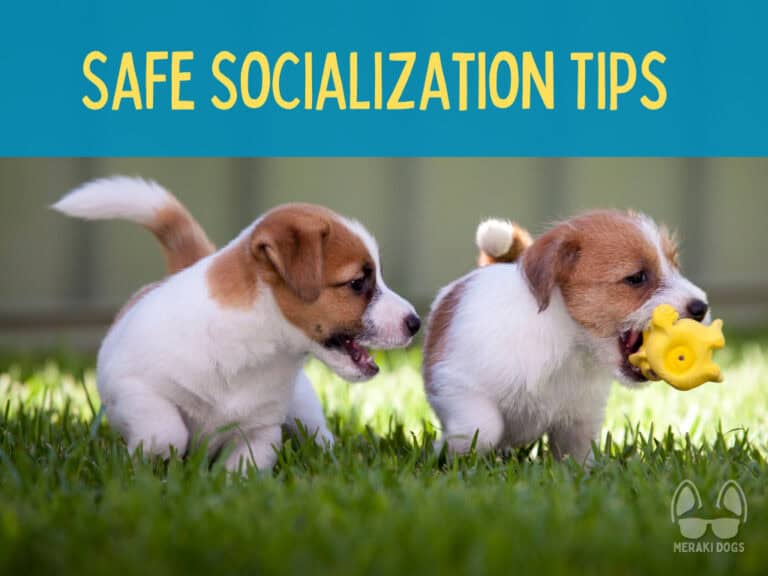How to Crate Train a Puppy: 8 Simple & Effective Steps

New Puppy Chaos? Crate Training to the Rescue!
Bringing home a puppy is a whirlwind of excitement, puppy breath, and, let’s be honest, a whole lot of mess.
- Shoes mysteriously disappearing only to be found half-eaten.
- Tiny “surprises” left on the rug.
- A furry shadow following you everywhere—even when you just need a bathroom break.
Sound familiar?
Now, what if I told you that you could minimize the chaos, prevent accidents, and even enjoy some uninterrupted me time?
Welcome to the world of crate training! Done right, crate training provides your puppy with a safe, cozy retreat while making house training, chew training, and alone-time training way easier. In this guide, I’ll break down how to crate train a puppy in 8 simple and effective steps, ensuring a smooth transition for both of you.
Key Takeaways
- Choosing the right crate is the foundation of successful crate training.
- The crate should be a positive space, not a punishment zone.
- Gradually increasing crate time helps build confidence and comfort.
- Expect some whining—it’s normal! But knowing when to intervene is key.
- Consistency, patience, and a strategic approach lead to success.
How to Crate Train a Puppy
Crate training doesn’t need to be complicated. Check out these steps to get a quick idea of what to expect!
- Choose the right crate
- Prepare the crate
- Build a positive relationship with the crate
- Short stays
- Crate time
- Cry it out
- Add time
- Be patient
Follow these instructions to help your puppy get accustomed to the crate quickly!
Step 1: Choose the Right Dog Crate
Picking the right crate isn’t just about grabbing the first one you see. The right crate size and type can make or break the training process.
Crate Type
Crates come in a few different styles, but plastic and wire crates are the best for puppies.
- Plastic crates – Great for travel and provide a cozy, den-like feel.
- Wire crates – Offer better airflow and often come with dividers to adjust the space as your pup grows.
- Soft crates – Not ideal for puppies because those tiny teeth can rip through them in no time.
Crate Size
Size matters!
- Too small? Your puppy will feel cramped and uncomfortable.
- Too big? They might think one corner is for sleeping and the other is for potty breaks (not what we want!).
The ideal crate size should allow your puppy to stand up, turn around, and lie down comfortably—but not too much extra space. If you have a large breed puppy, get a crate with dividers so you can adjust the space as they grow.
While appealing, a teething puppy can easily tear soft crates apart, something I strongly recommend avoiding until fully crate-trained.
Step 2: Prepare the Crate
Your puppy’s crate should feel like a safe, cozy retreat—not a puppy jail cell.
- Add a soft blanket or crate pad (unless your puppy turns into a tiny shredder—then hold off).
- Toss in a durable chew toy to keep them entertained.
- Place the crate in a quiet, low-traffic area, like your bedroom or a peaceful corner.
Pro Tip
Always provide a long-lasting chew (like a filled Kong) to make crate time rewarding!
Should You Put Puppy Pads in a Crate?
Nope! Puppy pads encourage accidents by signaling to your puppy that it’s okay to potty in the crate. Instead, take them out for frequent potty breaks.
Your puppy should want to go into the crate, not feel like they’re being locked away.
Ways to Make the Crate a Happy Place:
- Feed meals in the crate – Food = happiness.
- Play crate games – Toss treats inside and let your pup run in to grab them.
- Keep the door open when not in use—let them explore freely.
- Special chew toys – Have a crate-only chew toy to make the crate extra special.
Game Time!
Toss a treat to the back of the crate, allowing your puppy to dash in and eat it. Repeat this action, but shut the crate door (just for a second).
Once shut, sprinkle treats at the far end of the crate, away from the door. As your pup turns to eat them, reopen the door and let them out.
This exercise helps relieve any hesitation your puppy may have with the crate door and prevent poor manners at the door.
Step 4: Short Stays
Now that your pup thinks the crate is awesome, it’s time to test short stays.
- Scatter treats inside.
- Close the door and sit near the crate for a few minutes.
- Occasionally drop a treat in (through the bars, not the door).
- Let them out only when calm—no whining their way to freedom!
Why? This teaches them that whining doesn’t open the crate, but being calm does.

Step 5: Crate Time (Without You in the Room)
Now, it’s time for some real crate time. But first, check these boxes:
✅ Potty break? ✔️
✅ Exercise/playtime? ✔️
✅ Quick training session? ✔️
If yes, then your puppy is ready for a short crate session.
- Place a high-value treat or filled Kong deep inside the crate.
- Let your puppy enter voluntarily.
- Quietly exit the room for about 30 minutes.
If your pup falls asleep, let them rest! Don’t wake them up just to “stick to the schedule.”
Pro Tip
When wrapping up the session, your pup will likely be excited to come out and start pawing and whining. Quietly wait at the crate door for them to calm down before letting them out.
Opening the crate while your pup is excited and rambunctious can result in poor crate manners and anxiety at the door.
Step 6: Cry It Out (Within Reason)
Whining is normal. Puppies are used to sleeping with their littermates, so alone time feels weird at first.
But here’s the golden rule: Don’t rush to comfort them immediately.
- Soft, occasional whining? Ignore it.
- Loud, desperate cries that last more than a few minutes? They may need a potty break.
- Sudden whining after being quiet? Could mean they need to go outside.
If they really struggle, try covering the crate with a blanket for a den-like feel.
Step 7: Increase Crate Time Gradually
As your puppy adjusts, start adding time to crate sessions. A good rule of thumb:
Age in months + 1 hour = maximum crate time per session.
| Puppy’s Age | Max Crate Time |
|---|---|
| 2 Months | 3 Hours |
| 3 Months | 4 Hours |
| 4 Months | 5 Hours |
| 5 Months | 6+ Hours |
Never leave a young puppy in a crate longer than their bladder can handle.
Step 8: Be Patient (Seriously!)
Some puppies take to the crate immediately. Others act like you’ve betrayed them. Every pup is different. Stay consistent, be patient, and don’t let a little whining derail the process.

New to Puppy Parenting?
My New Puppy Essentials Bundle is the helping hand you need. Dive into expert advice and practical checklists!
Why You Should Crate Train Your Puppy
Crate training is more than just a way to keep your puppy out of trouble—it builds good behavior, confidence, and safety skills that last a lifetime. Here’s why it’s one of the best things you can do for your pup.
1. It Makes Potty Training Easier
Dogs naturally avoid soiling their sleeping space, so a crate teaches bladder control and helps establish a consistent potty routine. Instead of sneaky accidents behind the couch, your puppy learns to “hold it” until it’s time to go outside. This speeds up potty training!
2. It Prevents Destructive Behavior
A crate keeps your puppy out of trouble when you can’t supervise them—no chewed-up shoes, shredded furniture, or eaten drywall. Always provide a safe chew toy to keep them occupied while inside.
3. It Builds Confidence & Prevents Separation Anxiety
Dogs who learn to be alone in a crate grow up to be more independent and less anxious. A crate teaches your puppy that alone time is normal and safe, reducing excessive barking, destructive chewing, and panic when left alone.
4. It Keeps Your Puppy Safe in Emergencies
A crate-trained dog is easier to transport and handle in emergencies, whether it’s a vet visit, car ride, evacuation, or recovery from surgery. If your dog ever needs to be confined, they’ll be far less stressed if they’re already crate-trained.
5. It Provides a Private, Safe Space
Just like humans have bedrooms, dogs need a quiet retreat too. A crate gives them a place to escape when they’re tired, overwhelmed, or just want to relax away from kids, guests, or noisy environments.
6. A Crate-Trained Dog is Welcome in More Places
Many hotels, vacation rentals, and boarding facilities require crate training. If your dog can stay calmly in a crate, traveling and pet-sitting become much easier for everyone involved.
What Happens If You Skip Crate Training?
Without crate training, dogs are more likely to develop:
❌ Housebreaking struggles – More accidents, longer potty training.
❌ Destructive habits – Chewing, digging, and ruining furniture.
❌ Separation anxiety – Excessive barking, pacing, or panic when alone.
❌ Stress in confinement – Vet visits, boarding, and grooming become a nightmare.
Crate training isn’t about restriction—it’s about structure, safety, and setting your puppy up for success. Take the time now, and you’ll have a happier, well-adjusted dog for life.

Is it cruel to crate a dog?
Not at all—when done correctly, crate training provides your dog with a safe and secure space. Think of it as a personal bedroom rather than a punishment. Dogs naturally seek out small, enclosed areas to rest, much like their wild ancestors used dens.
That said, misusing the crate (such as leaving your dog in it for excessive periods without breaks or using it as punishment) would be unfair. The key is to ensure the crate is always associated with calmness, comfort, and positive experiences.
How long does it take to crate-train a puppy?
It depends on the puppy! Some get comfortable in a few days, while others take weeks to fully adjust. Factors that affect the timeline include:
- Past experiences – Puppies introduced to crates early (such as by a responsible breeder) usually adapt faster.
- Temperament – Confident puppies may accept the crate quickly, while more anxious pups might need extra patience.
- Consistency – Sticking to a routine and rewarding calm behavior speeds up the process.
On average, expect 2–4 weeks for your puppy to fully adjust to crate training. If your pup struggles longer than that, evaluate your approach—are you crating for too long? Rushing the process? Reinforcing bad habits (like letting them out when they whine)? Adjust as needed!
Frequently Asked Questions
Bottom Line
Crate training isn’t about restricting your dog—it’s about giving them structure, safety, and confidence. When done right, it makes potty training easier, prevents destructive behavior, and helps your puppy feel comfortable being alone. Plus, a crate-trained dog handles vet visits, travel, and emergencies with far less stress.
If you’ve been wondering how to crate train a puppy, the key is patience, consistency, and making the crate a positive place. Stick with the process, and you’ll soon have a puppy who sees their crate as their own safe retreat.
Need more puppy training tips? Sign up for our newsletter for expert advice!


